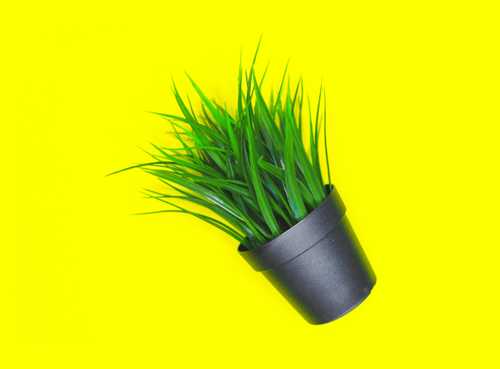
In UK cities, fake flowers festoon the exteriors of shops, restaurants, hotels, pubs, and bars, while, inside, entire walls have been covered to form “supposedly glamorous backdrop[s] for selfies”.
This trend was noted by the country’s Telegraph newspaper in 2019. Several years later, it shows no sign of abating. But how is it that something previously considered a staple of “shabby guesthouses” has been so thoroughly rehabilitated? Particularly in an era of supposed sensitivity to the issues surrounding the use of plastics.
Why have plastic flowers become fashionable?
As with so many other things, we may be able to blame covid (at least in part): when it was not possible for cut flowers to be shipped, “stylists and florists turned to artificial [options]”. The pandemic cost the lives of nearly seven million people; that this didn’t deter certain sectors from finding a way to source their “beloved flowers” gives some indication of the skewed priorities in action.
To some extent, then, previous connotations of the “tack[iness]” and “vulgar[ity]” attached to fake flowers were dissipated by the non-availability of the real thing. Women’s fashion magazine Harper’s Bazaar describes fake flowers as having “throw[n] off the less-than-luxury associations that ‘fake’ often denotes – in other words, budget-friendly, bad quality and just a little bit naff”, while The Financial Times describes them as “no longer [being] the ‘obscene mockery’ that John Updike once described”, with a new generation “dispel[ling] the image of dusty, sun-bleached blooms on your granny’s sideboard”.
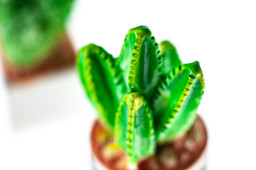
The FT is “relied upon by business leaders, government ministers, international entrepreneurs, bankers, [and] investors”; an economic bracket representative of the establishments that have led artificial flowers’ latter-day revival: the Ivy restaurant, the Royal Opera House, fashion houses such as Chanel and Dior, and even the British Royal Palaces.
Now, though, this fad has spread to less rarefied spaces such as beauty salons, hairdressers, and, ironically, even florists. Increasing sales at Tesco and on Amazon also speak to a creeping spread into the domestic sphere – and this isn’t limited to plastic bouquets, but entire gardens filled with fake plants.
And how are people persuading themselves that this isn’t a terrible idea?
In ‘Why the Rich Love Plastic Plants’, The Times quotes owners who praise the “brilliance” of fake gardens on the basis of being bad gardeners, because “dogs, cats and foxes hate it”, and the high “hourly charge for garden labour in [affluent] west London”.
However, the article exposes its own perspective when it notes that it’s possible to understand the feelings of “the anti-fake garden brigade” (note the use of “brigade” as a pejorative) by browsing Shit Lawns. This satirical but roundly depressing Twitter/X account describes the British garden as being “where hope for humanity goes to die”.
Elsewhere, Muddy Stilettos (“an intelligent, witty and indispensable guide to the countryside”) claims that artificial flowers have “come on [such] a long way since the days of plastic carnations [that] these beauties will fool any guest”. In case you’re tempted to take this as read, a further statement may give you pause: the claim that fake flowers are preferable to cut flowers because of the carbon emissions involved in transporting them. (Fresh flowers tend to be flown to the UK in planes’ refrigerated holds, whereas plastic ones can be shipped.)
Yes, like many other elements of the globalized economy, trade in real flowers is problematic. Yet, though the subject of article claims to be “all about the environment”, they fail to acknowledge:
- That global shipping also has more than its fair share of problems (including air, water, sound, and oil pollution)
- The glaring difference between real and plastic flowers: that, in spite of their footprint, real flowers won’t take hundreds of years to break down, contaminate water supplies when they do, get into the food web, and cause “DNA damage and promote cancer” in humans and animals.
Attempting to justify the use of artificial flowers on the basis that real ones “go horrible” after a few days won’t stand. This perspective also overlooks exactly the transience that underpins flowers’ beauty, and embodies the self-interested contemporary Global Northern mania for instant (and continual) gratification.
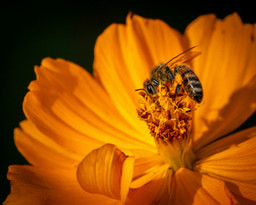
In the same spirit, Harper’s Bazaar enthuses that fake flowers’ “endless versatility and reusability makes them, in fact, far more eco-friendly than their real-life counterparts”. Again, this is, at best, incorrect; at worst, a barefaced lie. The magazine talks about “forever flowers” – but who wants to stare at the same, unchanging plastic bouquet for weeks, months, years, or decades? The truth is that these flowers are eventually destined for landfill (because they’re made from a mix of plastics, recycling plants aren’t yet able to process them), even if they’re put away for long periods in the interim. It’s not even true that fake plants will last indefinitely; especially if used outside, exposure to sunlight will fade them after about a year – to say nothing of the wear (and production of microplastics) caused by the effects of the weather.
The co-founder of a company which offers “design-led curation of […] faux flowers” states that, “Plastic isn’t a bad material, we just shouldn’t be throwing it away” – overlooking the fact that all plastic has an end of life (even if it is – or can be – recycled, its quality degrades each time). Given the eco-friendly alternatives in development (for example, mycelium-based options), this outlook is curiously retrograde, tone-deaf, and unprogressive, yet seems representative of the superficiality and inadequate analysis which has led to the comeback of something better left in the 1970s.
Admittedly, because of the variety of intersecting factors involved, it is extremely difficult to assess how problematic a specific product is. However, artificial flowers are:
- Petrochemical products
- Produced in factories, primarily in Guangdong province, China – a country with mediocre labor conditions (insecure, poorly paid jobs; endemic workplace discrimination; a dysfunctional social security system; comparatively high accident rates, incidence of occupational disease, and even death tolls)
- Impossible to dispose of ethically (regardless of how long they are used for – which, in the fashion-adjacent world of “trendy” bars and restaurants, is unlikely to be for long).
The notion of framing plastic flowers as a positive option is, frankly, nonsense.
The production of plastic:
- “Contaminates at every stage – from production to disposal”
- Necessitates the use of non-renewable fossil fuels, “which are often extracted using environmentally destructive methods”, and has a considerable impact on ecosystems and water flow
- Contributes to the climate crisis by emitting greenhouse gasses like carbon dioxide and methane.
We need less plastic in our lives, not more.
In addition:
- This extraction, fossil fuels’ processing in refineries and cracking plants, and the manufacture of items from the resulting plastics all releases toxic substances which have serious health implications
- The processing, manufacture, distribution, and use of plastic items all release harmful microplastics into waterways, oceans, and the air
- “Inhaling, ingesting, or coming into contact with the toxins in plastics can: cause developmental issues, lead to cancer, [and] impact endocrine-disrupting chemicals, which can damage hormones”
- Disposal (in landfills or via incineration) allows toxic substances which have serious health implications to leach into waterways and soil, or releases them into the air; ‘fly ash’ “builds up in the tissues of plants and animals”.
All this for some tacky fake flowers.
Nevertheless, the Harper’s article is instructive when it slips up by stating, “The price of cut flowers has sky-rocketed thanks to inflation and higher labour costs”. A follow-up line about real flowers’ “massive financial and environmental cost” fails to disguise this reveal of the real impetus for plastic flowers’ increasing popularity: they’re cheap, so sod the planet.
Cut flowers it is, then?
It’s not that straightforward. The global cut flowers industry is also accompanied by its own raft of negative impacts:
- Flower farms can consist of industrial-scale greenhouses, in some cases covering more than 500 acres
- Flowers use large quantities of water, causing equally high levels of chemical runoff. It has been claimed that Kenya’s “drought-stricken Lake Naivasha […] has seen half of its water drawn off for use in flower greenhouses”
- Heated greenhouses and refrigerated, long-haul transport produces high levels of carbon dioxide emissions
- In Colombia (the world’s second largest flower exporter), “16 hour days under strict productivity monitoring” aren’t unusual, meaning that the predominantly female workers “suffer from permanent wrist injur[ies] as a result of cutting so many flowers”
- Workers are often underpaid, and “are exposed to toxins in fertilizers and insecticides [and] preservatives”, and even herbicides like the disputed carcinogen glyphosate
- Children in local communities have experienced “alter[ations to] short-term brain activity” due to contamination via clothing and possibly through water downstream from flower farms.
Though these realities are horrendous, they don’t necessarily vindicate plastic alternatives.
“It’s not just the haunting thought of the waste of a dead plant that is driving people towards fake”, says the FT; “it’s all the packaging that comes with fresh flowers, too”. Yes, the single-use plastic that cut flowers are often wrapped in is also awful and unnecessary. But, again, it’s deeply spurious to defend fake flowers – a load of plastic which will eventually end up in landfill – by saying that cut flowers are dreadful because they come wrapped in plastic. Pushing florists to not wrap fresh flowers in plastic wouldn’t ameliorate all the problems associated with the cut flower trade, but would at least be a movement towards a positive, material change.
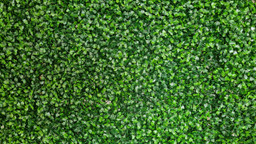
Assessments of the environmental friendliness of fake versus real plants conclude that, while the former “offer certain environmental benefits” (namely, reduced water usage and no need for pesticides), drawbacks include their “non-biodegradable materials and manufacturing processes” and their “emi[ssion of] VOCs harmful to human health”. Ultimately, real plants remain “the best option for the environment”.
What about wildlife?
It should surprise no one that real plants also remain the best option for gardens. Butterflies, bees, and other pollinators reply upon living plants – as do, indirectly, the birds, bats, hedgehogs, and amphibians which in turn reply upon those arthropods.
For this reason, adopting plastic facsimiles of plants in gardens only further threatens our already dangerously imperiled wildlife. This includes the increasingly common use of artificial lawns, like AstroTurf, which are associated with a significant range of issues, including the creation of wildlife no-go zones by “removing habitat which a wide range of species are dependent on”.
If this doesn’t seem significant, then consider that, in the UK, “there [is] 43 times as much garden as there is wildflower meadow”; every square foot in which the natural world is allowed to retain a foothold is beneficial. By contrast, fake plants provide “absolutely zero value for biodiversity”.
As landscape and garden designer Jack Wallington says, “When our wildlife is under such pressure because all of its habitat is being destroyed or removed, every garden counts.” Constance Agyeman, a plastics and recycling expert at the innovation charity Nesta Challenges, adds that the broader trend “for plastic flowers is utterly depressing. We need less plastic in our lives, not more.”
So what’s the answer?
The global trade in cut flowers is valued at US$55 billion per year, demonstrating the significance we give to possessing and sharing flowers. The suggestion that perhaps we ought to use fewer of either real or artificial blooms, then, isn’t going to cut it.
It’s worth pointing out that fake flowers aren’t inherently aesthetically ugly (Updike is again relevant when he says that “‘taste’ is a social concept and not an artistic one”); in the Victorian era, the production of “amazingly detailed, hand assembled” artificial flowers made from fabric were the product of “a labour-intensive trade that involved all members of a family”.
Of course, this is not to endorse child labour (many of the women involved in this trade would have started as young as eight), but it does show that artificial flowers need not necessarily be cheap and nasty. However, this kind of intensive skilled labor equates to a level of cost that most businesses would balk at – hence the proliferation of cheap plastic versions mass-produced in factories. Perhaps it’s fairer to say that plastic flowers are conceptually ugly.
Not that this stops “fleurs artificielles” being described in terms of “the beauty of nature [they can bring] into [the] home[s]” of “people who travel a lot” (for whom “constantly having to take care of fresh flowers is troublesome”; the heart bleeds). That artificial flowers are, by definition, unable to provide “the beauty of nature” reflects what floral designer Jonathan Moseley terms “a distinct dumbing down of the transient beauty of natural living plant materials”.
This increasing disconnection from the realities of the natural world is borne out by statements about fake plants such as: “The pure simplicity of being able to bring nature into the home without the care and mess that usually comes with real plants is the true appeal of faux, not to mention the certainty that your plant won’t die in a few months.” God forbid that we engage with the reality of the living world, or – even worse! – make any effort whatsoever.
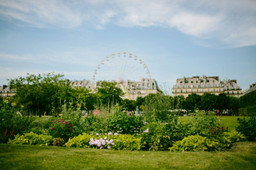
Still, perhaps there’s light at the end of the tunnel: The Times has reported that, as of February, the city council of Paris, France, “voted unanimously to crack down on the plastic floral features that have been deployed since the pandemic”, and “is busy drafting a legal framework for the ban”. Plastic flowers have been used to decorate the frontages of 325 establishments in tourist areas – a trend in part blamed on Netflix’s Emily in Paris, a “cultural[ly] ignoran[t]” US “fantasy of the city as a haven of colour and luxury”. As well as seeing these displays “as an unsightly and polluting fire risk”, the council has deemed them to be antithetical to the aesthetic heritage of the City of Lights.
Featured photo by Daniele Franchi on Unsplash
Earth.fm is a completely free streaming service of 1000+ nature sounds from around the world, offering natural soundscapes and guided meditations for people who wish to listen to nature, relax, and become more connected. Launched in 2022, Earth.fm is a non-profit and a 1% for the Planet Environmental Partner.
Check out our recordings of nature ambience from sound recordists and artists spanning the globe, our thematic playlists of immersive soundscapes and our Wind Is the Original Radio podcast.
You can join the Earth.fm family by signing up for our newsletter of weekly inspiration for your precious ears, or become a member to enjoy the extra Earth.fm features and goodies and support us on our mission.
Subscription fees contribute to growing our library of authentic nature sounds, research into topics like noise pollution and the connection between nature and mental wellbeing, as well as funding grants that support emerging nature sound recordists from underprivileged communities.

